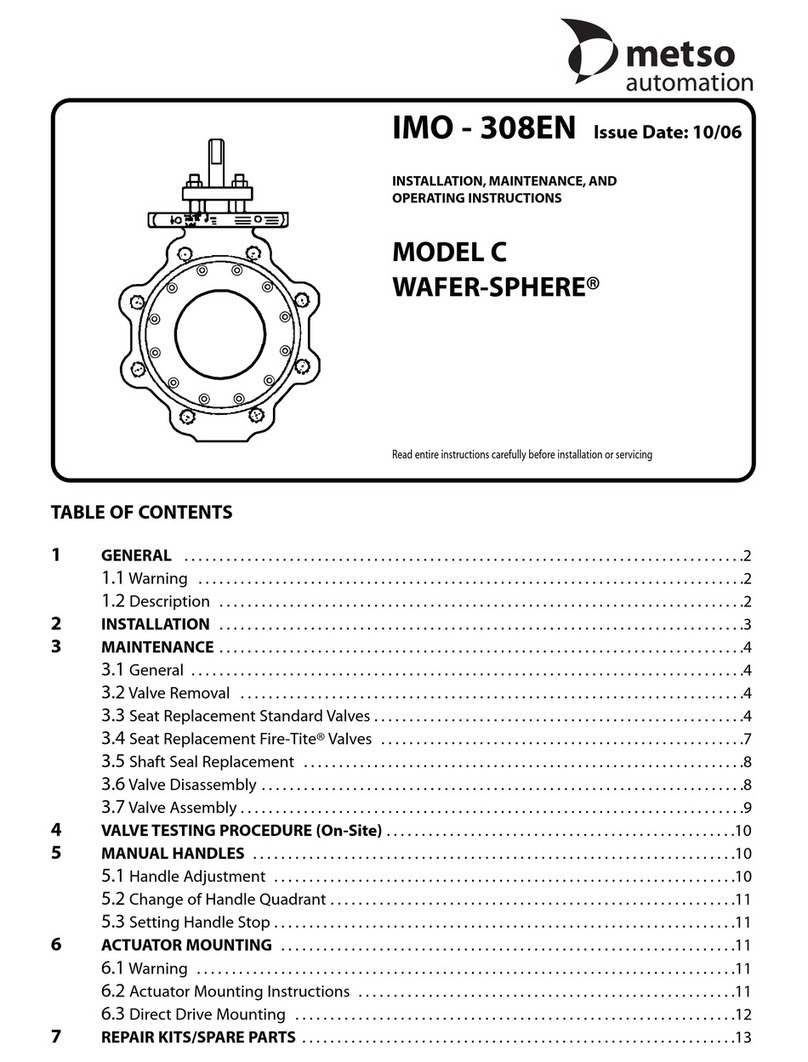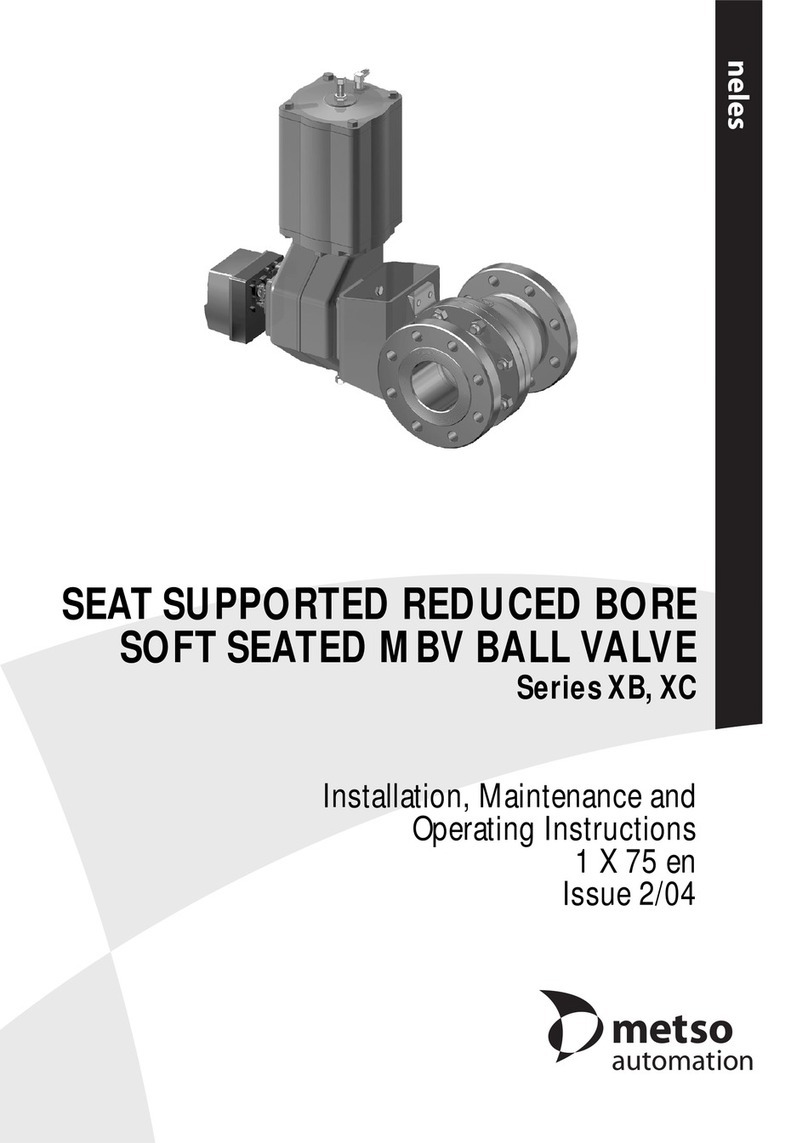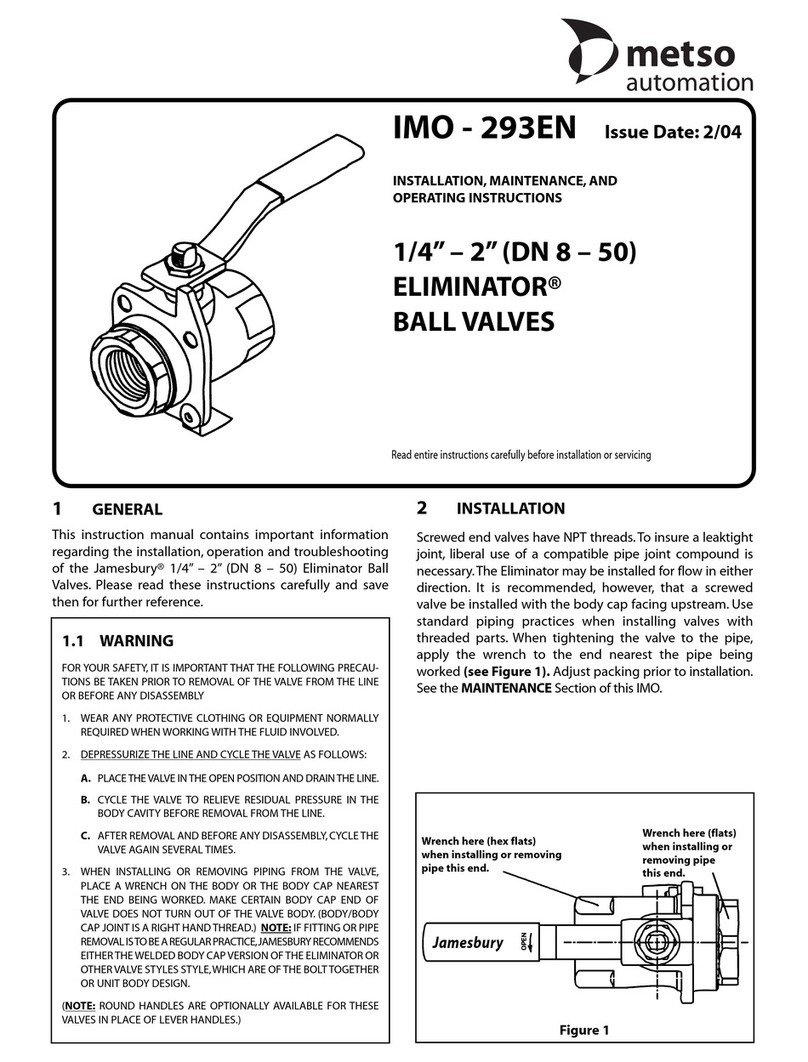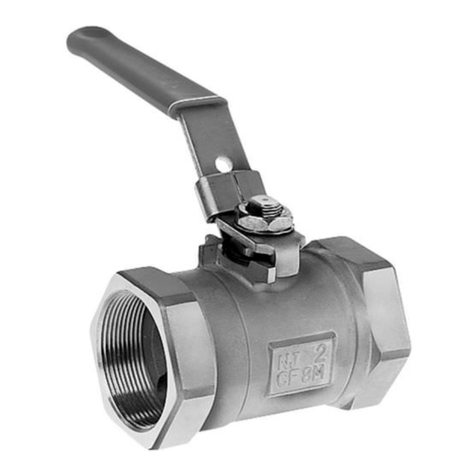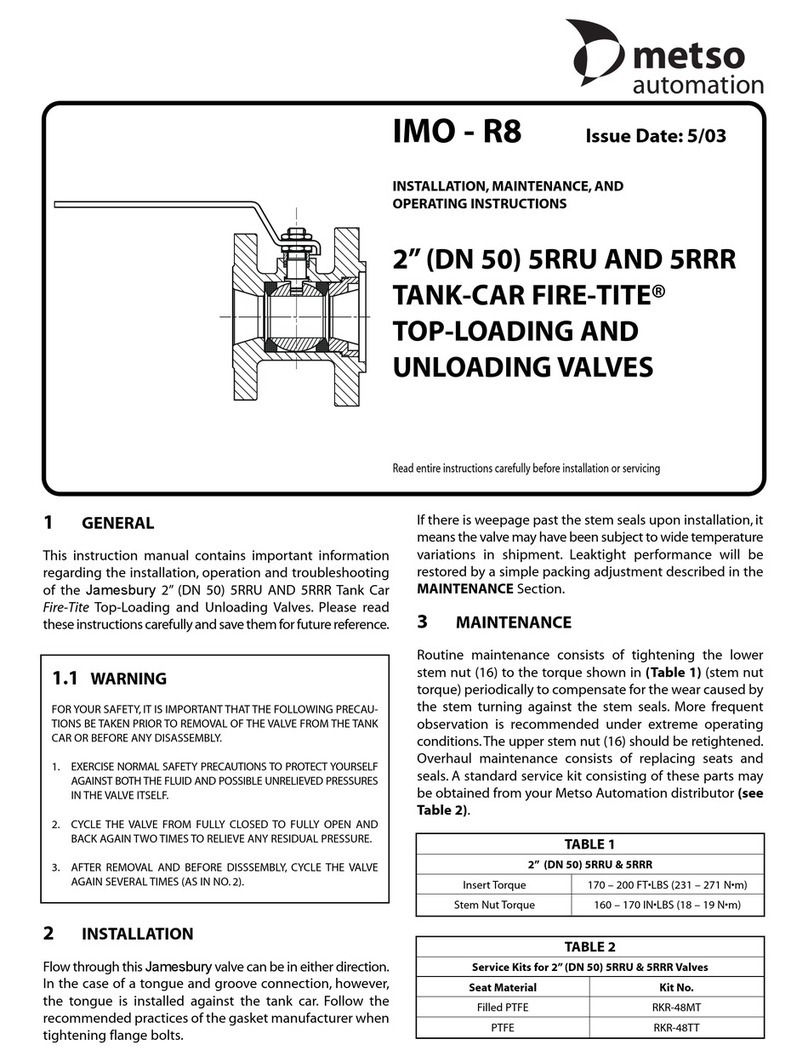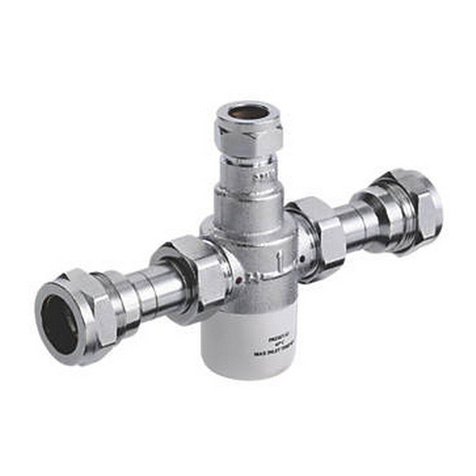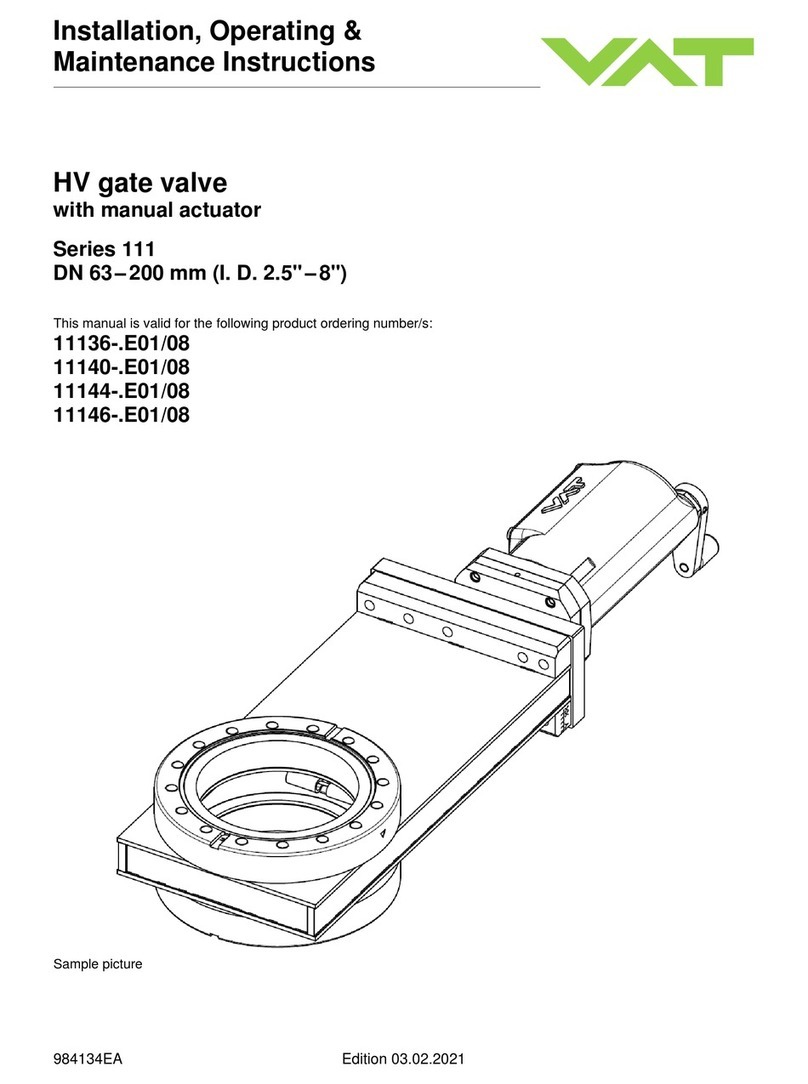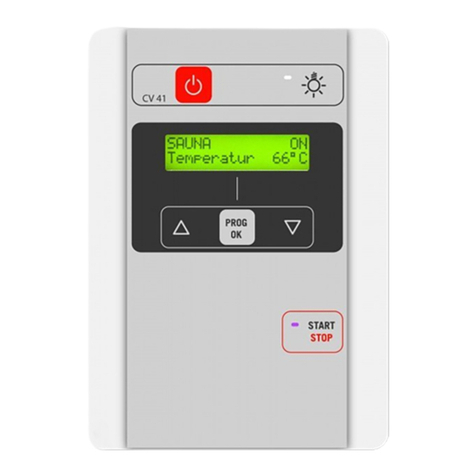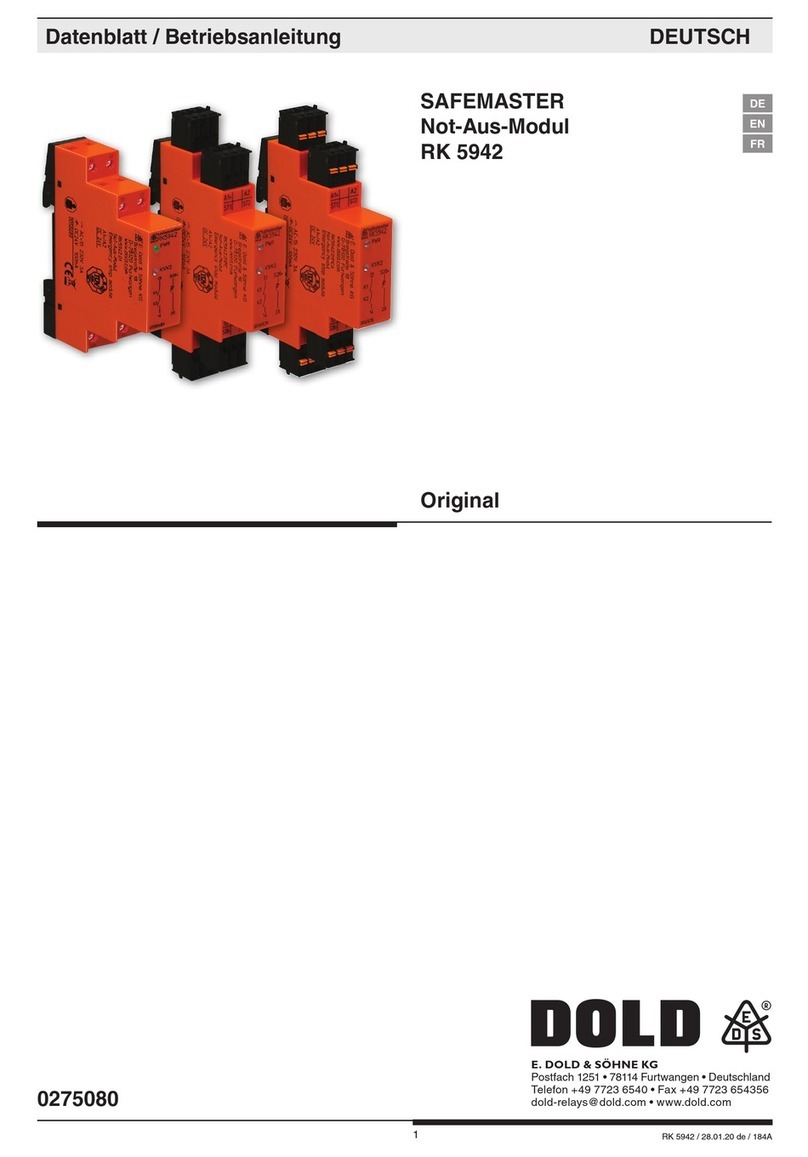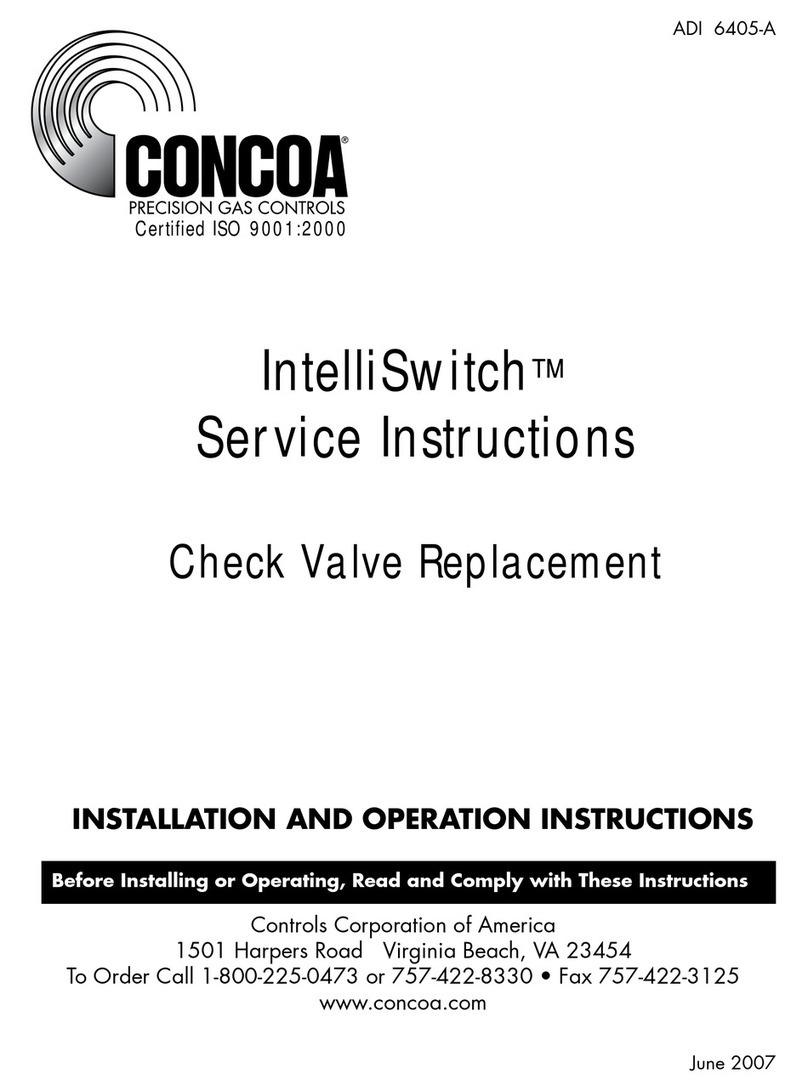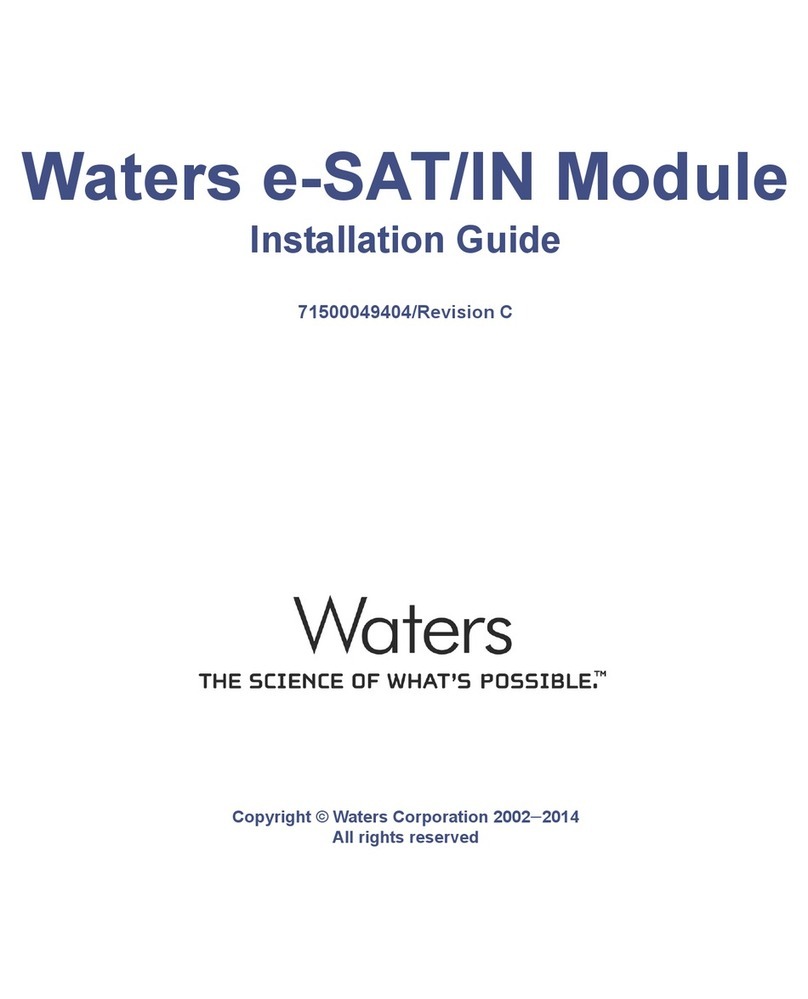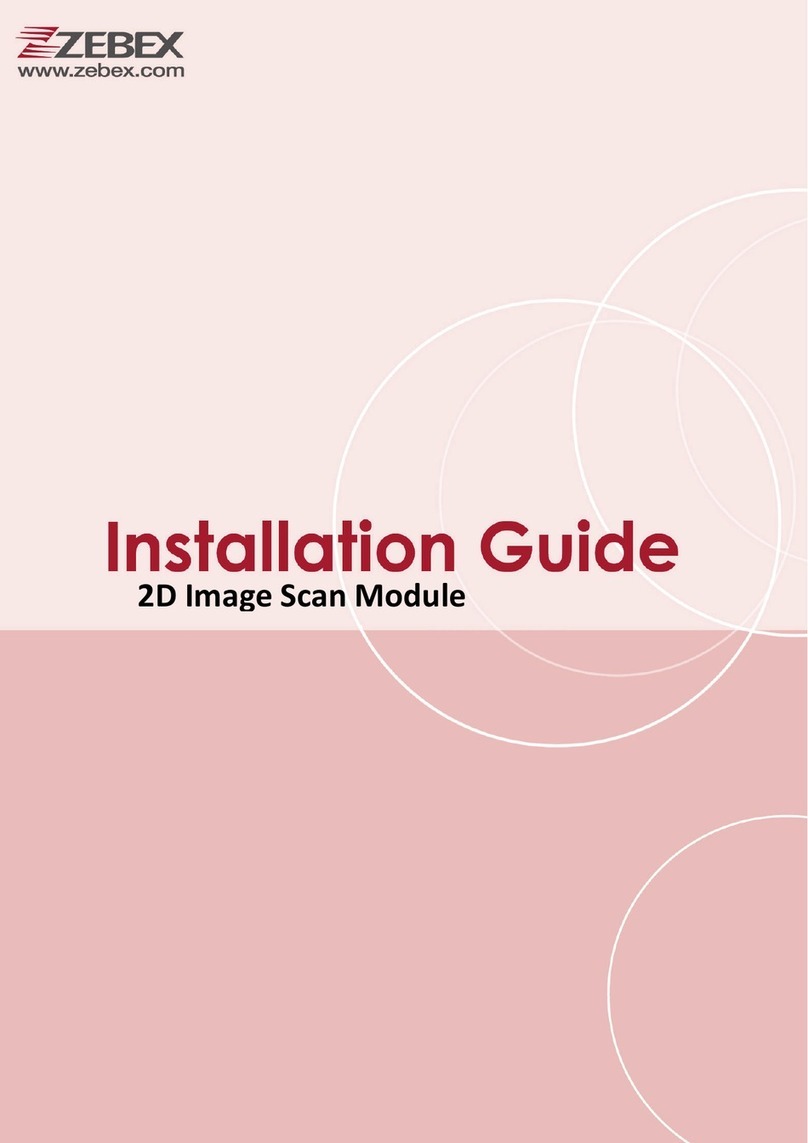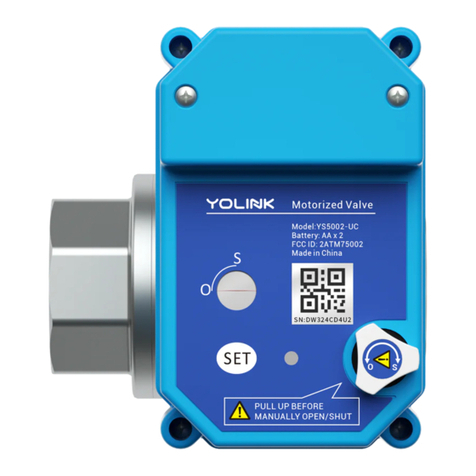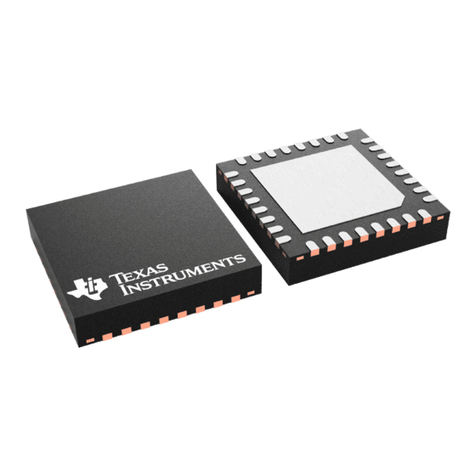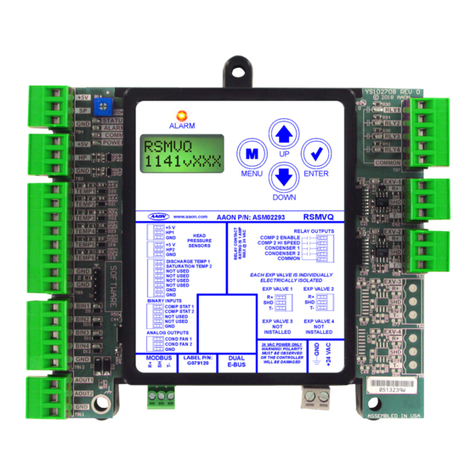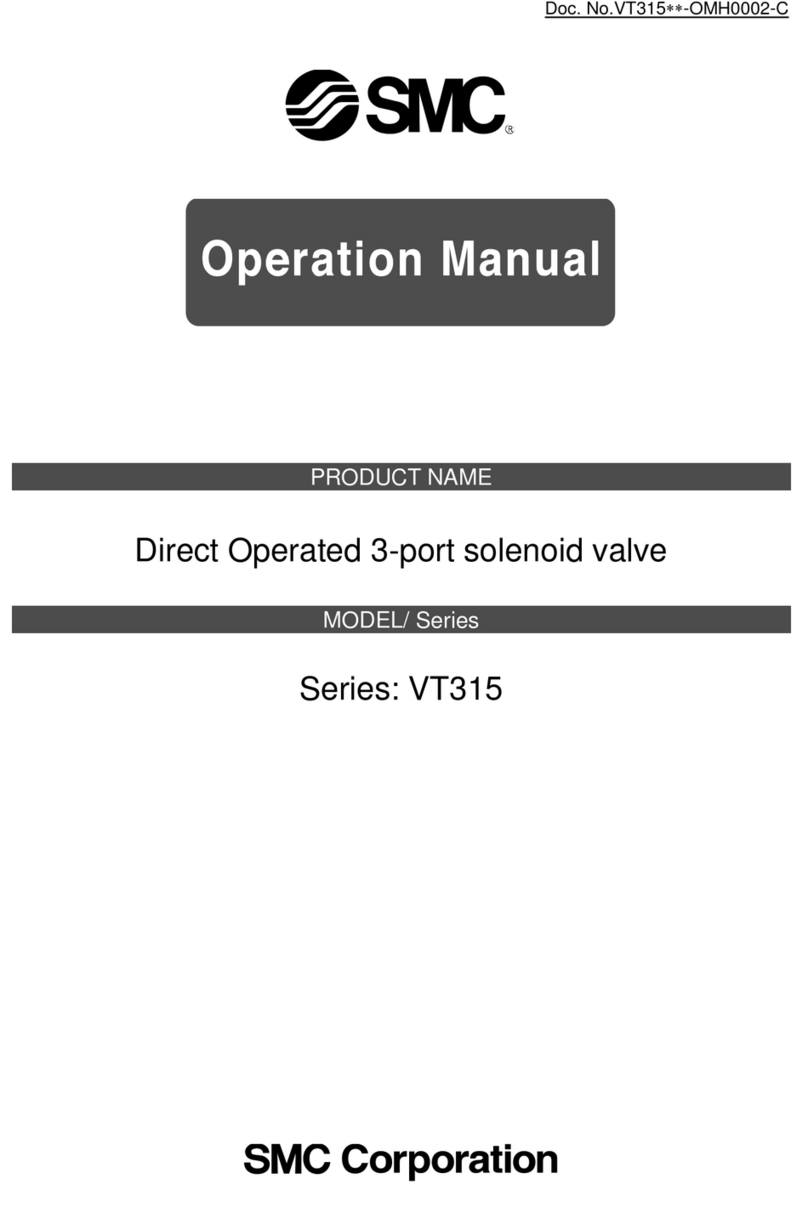4. If the ball (3) and seats (5) do not fall from the body
with the ball in the fully closed position, use a piece of
wood or some other soft material to gently tap the ball
(from the end opposite body cap). This will unseat
these parts without damaging the ball.
5. Press the stem (4) from the top into the valve body and
remove it through the body cap end of the body.
6. Using a wire brush, clean the body cap thread and
body threads to remove any excess thread lock.
7. Using a pointed instrument, pry out and discard the
old stem seals (7), stem bearings (8) and Fire-Tite®
bearing (13),if applicable.Be very careful not to scratch
any sealing surfaces in the valve body (surfaces on
which seats and seal rest).
2.2 Assembly
1. Clamping valve body (1) securely in a vise, drop in one
seat (5) with the flat surface on the bottom.
2. Insert from the inside a stem bearing (8), a FIRE-TITE
seal (13), and another stem bearing (8) into the lower
stem bore.
3. Insert the stem (4) through the open end of the body
(1), being careful not to scratch the stem bearings and
stem bearing surfaces. Press it gently up into the stem
hole.
4. Holding the stem bearing in place from inside the
valve, install two stem seals (7), the compression ring
(18), and thread on one of the stem nuts (16) until the
stem starts to turn.
5. Place a wrench through the body on the bottom of the
stem blade to hold the stem stationary. Place another
wrench on the stem nut (16), and turn the nut down
until the seals bottom and the stem comes snugly in
place. Tighten the stem nut (16) until snug, plus an
additional 1/4 - 1/2 turn.
6. Align the stem blade inside the valve body (1) with the
ball (3). Insert the ball (3) and rotate the stem (4) to the
ball fully closed position.
7. Insert second seat (5) into the body (1) so that the
sealing surface of the seat is towards the ball. Insert
the body seal (6).
8. Apply Loctite® 272 or equivalent, one bead 360˚
around the body cap (2) covering a minimum of two
threads.
9. Insert the body cap (2), screw it down and tighten to
the required torque, (see Table 1 for Body Cap
Torque specifications).
10. Place the handle (15),lockwasher (9) and stem nut (16)
over the stem (4).Tighten the stem nut (16) until snug.
11. Cycle the valve slowly twice to ensure permanent
position of the ball between the two seats.
3MAINTENANCE
Periodically observe the valve to be sure of proper
performance. More frequent observation is recommended
under extreme operating conditions.
Routine maintenance consists of tightening the stem nut
1/4 turn periodically to compensate for the wear caused
by the stems turning against the resilient PTFE seal.
4SERVICE KITS
FIRE-TESTED service kits include two seats (5), two stem
seals (7), two stem bearings (8), a secondary seal (13), and
one body seal (6).
5 REPAIR KITS/SPARE PARTS
For further information on spare parts and service or
assistance visit our web-site at www.jamesbury.com.
2
TABLE 1
Body Cap Assembly Torque
Valve Size Body Cap Torque
1/2” (DN 15) 100 lb-ft (136 Nm)
3/4” (DN 20) 150 lb-ft (203 Nm)
1” (DN 25) 225 lb-ft (305 Nm)
1-1/4” (DN 30) 275 lb-ft (373 Nm)
1-1/2” (DN 40) 350 lb-ft (475 Nm)
2” (DN 50) 600 lb-ft (814 Nm)
3” (DN 80) 600 lb-ft (814 Nm)
TABLE 2
Service Kits
Valve Size T Seats M Seats
1/2” (DN 15) RKN107-TT RKN107-MT
3/4” (DN 20) RKN109-TT RKN109-MT
1” (DN 25) RKN110-TT RKN110-MT
1-1/4” (DN 30) RKN111-TT RKN111-MT
1-1/2” (DN 40) RKN112-TT RKN112-MT
2” (DN 50) RKN198-TT RKN198-MT
3” (DN 80) RKN225-TT RKN225-MT
